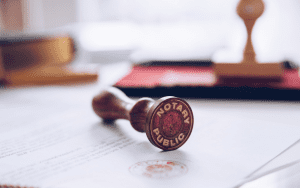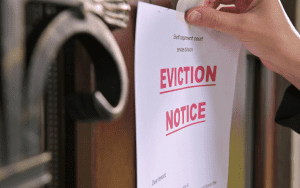This article will briefly look at two actions that can be instituted simultaneously, and an alternative to each other, when you have been wrongfully deprived of possession of your property. The first action is the rei vindicatio. This action is instituted in order to claim the physical return of one’s property. The second action, which will be discussed in this article, is the actio ad exhibendum. This is a delictual action that is normally instituted as an alternative to the rei vindicatio for damages in circumstances where the property can not be returned to the owner.
The are a myriad of circumstances where one might be deprived of possession of one’s property. You might, for example, have given permission to your friend to use your vehicle for one year, which your friend then refuses to return the vehicle after the friendship has turned sour a year later. South Africa is a constitutional democracy that is based on the rule of law, and you can not simply take back your vehicle with force in the absence of a court order as this would amount to taking the law into your own hands. Your friend, who has had undisturbed possession of your vehicle for a year, will in such circumstances be entitled to launch, and probably succeed with, a spoliation application against you.
An aggrieved owner who has been dispossessed of his or her property, will have to institute the rei vindicatio action in order to have his or her property returned lawfully. Such an aggrieved owner must allege and prove the following in order to succeed with this action:
- That he or she is the owner of the property; and
- That the defendant was in possession of the property at the time of institution of the rei vindication action.
Amler’s Precedents of Pleadings state that it is not necessary for the plaintiff to allege or prove that the possession of an owner’s property by another is wrongful as it is regarded as being prima facie wrongful.
There are various defences that a party faced with a rei vindicatio action can rely on. The two most obvious defences are, firstly, a denial of the plaintiff’s ownership and, secondly, a denial of possession of the property of which the return is being claimed. These two defences do not draw an onus as the plaintiff is the one who must allege and prove these elements in order to succeed with the claim.
A defendant can also allege that the property in question was already returned to the plaintiff. The defendant will have the onus of proving this defence. Another defence that draws an onus in that the defendant must allege and prove it if the defendant wishes to rely on a right to possession (i.e., claim that he or she, although not the owner, is in lawful possession of the property).
The bona fide disposal of possession is a complete defence, which can be raised by a defendant. However, if the defendant knew of the plaintiff’s claim to the property, then the disposal will be deemed not to have been bona fide, but in fact wrongful. The plaintiff will then be entitled to rely on the actio ad exhibendum in order to claim damages calculated on the basis of the value of the property at the date of disposal.
The plaintiff must allege and prove four essential elements in order to succeed with his or her alternative claim in terms of the actio ad exhibendum. The plaintiff must firstly allege and prove that he or she is or was the owner of the property at the time when it was alienated by the defendant and, secondly, that the property was in the defendant’s possession.
The plaintiff must thirdly allege and prove that the defendant had knowledge of the plaintiff’s ownership of the property at the time that he or she lost possession thereof. It must be noted here that a defendant who loses possession of the property subject to a rei vindicatio action after such action has been instituted is regarded as being mala fide as he or she would have received proper notice of the plaintiff’s claim. The plaintiff must lastly also allege and prove that the defendant intentionally or negligently disposed of the property or caused its destruction.
It is clear from the above discussion that the fictional vehicle owner referred to above will not be allowed to simply attend to the former friend’s house and take the vehicle back with force. You will have to approach the court for relief and the sheriff will have to go fetch the vehicle once the court has granted an order in your favour. It is furthermore advisable to claim damages in the alternative should your former friend have severely damaged the vehicle or unlawfully sold it to an innocent third party.
Reference List:
- Amler’s Precedents of Pleadings 5th edition
This article is a general information sheet and should not be used or relied on as legal or other professional advice. No liability can be accepted for any errors or omissions nor for any loss or damage arising from reliance upon any information herein. Always contact your legal adviser for specific and detailed advice. Errors and omissions excepted (E&OE)
















